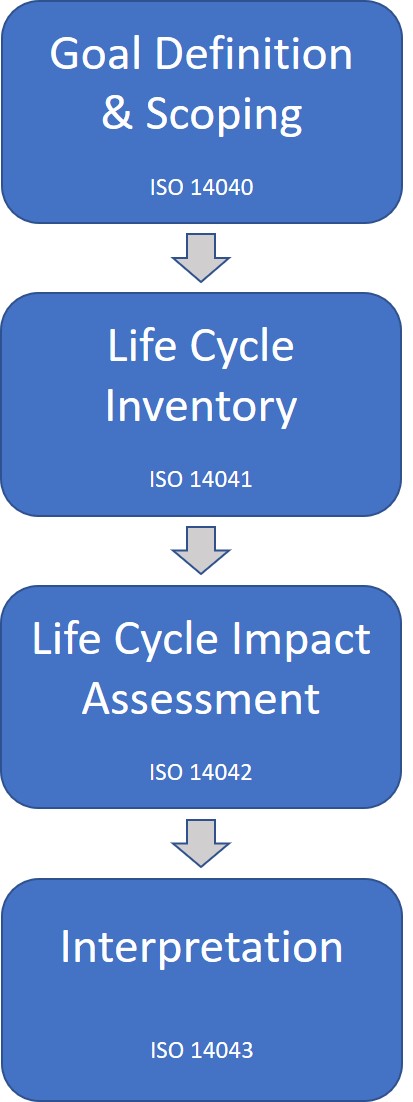Conducting a Life Cycle Assessment
The LCA process is a systematic, phased approach and consists of four components:
1. Goal Definition and Scoping
Define and describe the product, process, or activity. Establish the context in which the assessment is to be made and identify the system boundaries![]() , the functional units
, the functional units![]() , any assumptions and limitations, as well as the impact categories
, any assumptions and limitations, as well as the impact categories![]() (environmental effects) that will be considered for the assessment. These decisions are unique to each project as each project team’s priorities may be different.
(environmental effects) that will be considered for the assessment. These decisions are unique to each project as each project team’s priorities may be different.
2. Life Cycle Inventory (LCI) Analysis
Create an inventory of flows between the system and the environment across the defined system boundary. Then quantify these inputs (water, energy, and raw materials) and environmental outputs (e.g. air emissions, solid wastes, water effluents). For an example of a U.S. data repository see the Federal LCA Commons![]() .
.
3. Life Cycle Impact Assessment (LCIA)
Assess the potential human and ecological effects of energy, water, and materials usage and the environmental releases identified in the inventory analysis. Convert flows![]() into equivalent units using LCIA tools (e.g, SimaPro, GREET), so they can be aggregated into one number per impact category.
into equivalent units using LCIA tools (e.g, SimaPro, GREET), so they can be aggregated into one number per impact category.
4. Interpretation
Summarize the results of the inventory analysis and impact assessment with an understanding of the uncertainty and the assumptions used to generate the results. A key purpose of interpretation is to assess the level of confidence in the final results and communicate them in a fair, complete, and accurate manner. This is accomplished by evaluating the sensitivity of significant data elements in each impact category, assessing the completeness and consistency of the study, and drawing conclusions and recommendations based on a clear understanding of how the LCA was conducted and the results were developed
Life cycle assessments are complex processes requiring a great quantity of input data and analysis. Many tools have been developed to assist in this process and make it easier. Some of the building specific tools can be found in the LCA Tools for Buildings section.


